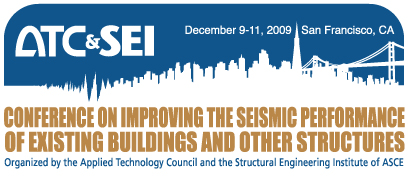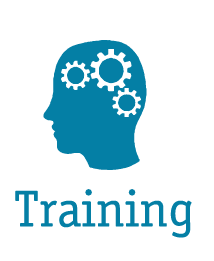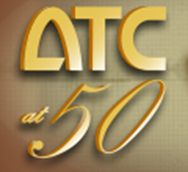The ATC&SEI Conference on Improving the Seismic Performance of Existing Buildings and Other Structures took place on December 9-11, 2009 in San Francisco, California. The first of what is hoped to be a series of joint events between the Applied Technology Council (ATC) and the Structural Engineering Institute of the American Society of Civil Engineering (SEI/ASCE), this inaugural conference was well-attended with more than 500 participants from 23 countries. In addition to the technical sessions, there were more than 25 poster displays and 20 exhibitors in the exhibit hall.
Daily plenary sessions included world-class presentations by Mary Lou Zoback and William Holmes on National Seismic Hazard and Risk and the Report Card on Seismic Rehabilitation Progress, respectively, by Ron Hamburger and Maryann Phipps on a 2020 Vision for Performance-based Seismic Rehabilitation of Building Structural Systems and Seismic Anchorage and bracing of Nonstructural Components, respectively, and by Lucile Jones and Chris Poland on the Great California Shake Out and a Call to Action at the Professional and Political Level, respectively. Luncheon plenary speakers were Thomas Tobin, who spoke on San Francisco’s Community Action Plan for Seismic Safety, and Masayoshi Nakashima on the Role of Large Scale Structural Testing in Seismic Rehabilitation.
The Conference offered a strong program on state-of-the-art seismic evaluation and rehabilitation of existing buildings in four concurrent tracks of technical sessions including papers and presentations on:
• Improvements to Guidelines, Standards and Analysis Procedures,
• Seismic Performance and Rehabilitation of Non-Building Structures,
• Seismic Performance of Nonstructural Components,
• New Materials and Innovative Approaches for Seismic Rehabilitation,
• Innovative Approaches to Rehabilitation,
• Mitigation Policy Issues, Strategies and Ongoing Programs, and
• Case Studies on Analysis and Rehabilitation.
By attending these sessions, participants could earn up to 16.5 professional development hours.
Among the technical sessions, one highlight was a presentation by Kit Miyamoto of Miyamoto International on work in Turkey to protect the population from the devastating effects of earthquakes. Outlining a broad program funded by the World Bank, the presentation illustrated the dramatic difference committed professionals can make in raising awareness of the need to improve a community or nation’s response to seismic risk, thus impacting the lives of millions who benefit from buildings, schools or bridges that can withstand the rigors of seismic loading. Another highlight was the hands-on demonstration in the hotel lobby by Patrick Buscovich of Buscovich Associates and Laurence Kornfield of the San Francisco Department of Building Inspection on the use of garage doors to resist lateral forces with a full-scale model.
Submitted paper abstracts and presentations from the conference are available for download here. In addition, if you were a registrant at the conference but did not obtain a copy of the Proceedings on site, please contact the ATC office for your complimentary copy. If you would like to purchase a copy of the Proceedings, you can do so in the ATC and ASCE online stores.

12/2009




